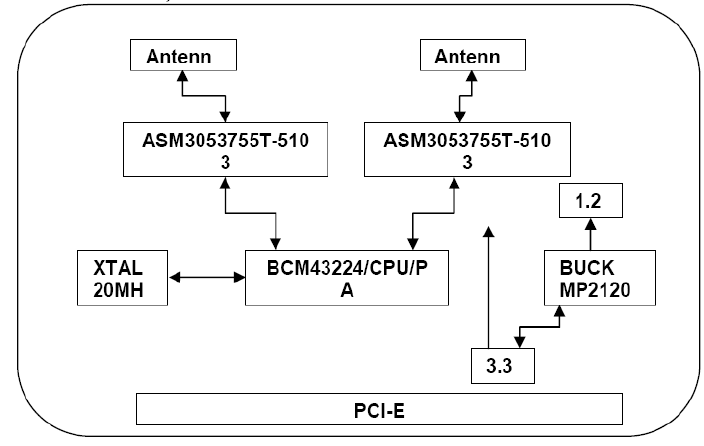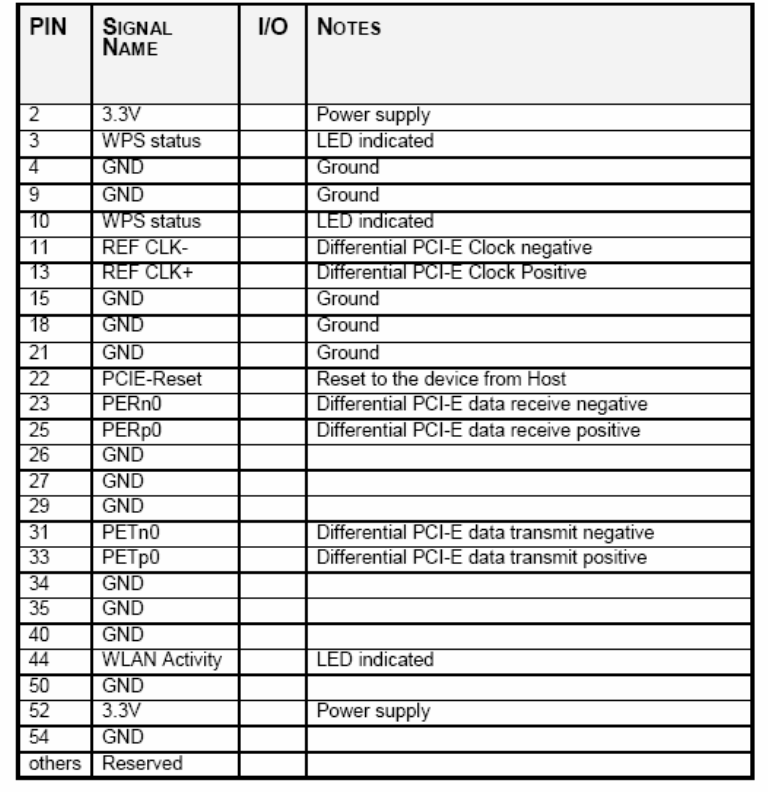Ubee Interactive C210400A BCM3380Z D3.0 Wireless eMTA User Manual DVW3201B um
Ubee Interactive Corp. BCM3380Z D3.0 Wireless eMTA DVW3201B um
manual
1
U S E R ’ S M A N U A L
DVW3201B
2
Content
1. Introduction............................................................................................................................. 3
1.1 Scope.................................................................................................................................. 4
1.2 Function.............................................................................................................................. 4
2 Product Specification............................................................................................................ 4
2.1 Hardware Specification................................................................................................. 4
3. Product Requirements.......................................................................................................... 5
3.1 Hardware Requirements................................................................................................ 5
3.2 Hardware Architecture.................................................................................................. 6
4 FCC Notice............................................................................................................................... 8
3
Section One: Introduction
1.Introduction
Project Name: 802.11 a/b/g/n (2x2) card based on IC BCM43224 with BGA package.
Product name:BCM3380Z D3.0 Wireless eMTA
The typical use model for this embedded device is to allow the client device to
be connected to an 802.11a/b/g/n 2x2 wireless network with infrastructure
4
mode or to serve as an ad-hoc (peer-to-peer) data path.
1.1Scope
The Wireless BCM43224 is an available 11n solution in the 2.4/5GHz band, compatible with the
IEEE802.11a/b/g/n. The 802.11 a/g data rate provides for 54, 48, 36, 24, 18, 12, 9, 6Mbps, and
802.11b data rate provides for 11, 5.5, 2, 1Mbps. In addition, 11n provide MCS8~MCS15 for HT20
which PHY data rate up to 150Mbps; also provide MCS8~MCS15 for HT40 with data rate up to
300Mbps.
1.2Function
• RoHS and Green Compliant.
• 802.11a/b/g/n 2x2 based on BCM43224.
• PCI-E Half Mini Supported.
• Module is powered by the host with a 3.3V +/- 10% supply (55mVpp ripple).
• Module’s clock source is provided by the on board XTAL Oscillator of 20 MHz
(+/- 10ppm).
• JTAG connector will be provided for FA and debug.
2ProductSpecification
2.1HardwareSpecification
Wireless LAN Standards IEEE 802.11 a/b/g/n
Operating Frequency 2400~2483.5MHz, 5150~5250MHz, 5725~5850MHz
WLAN Data Rate 802.11a/g: 54Mbps with fall back of 48, 36, 24, 18, 12, 9, 6Mbps.
802.11b: 11Mbps with fall back rates of 5.5, 2, and 1Mbps
802.11n: MCS8~MCS15
Transmitter Output Power Typical 10.0dBm(AV) for 11a
Typical 15.5dBm(AV) for 11b
5
Typical 15.5dBm(AV) for 11g
Typical 14.5dBm(AV) for HT20
Typical 13.5dBm(AV) for HT40
Receiver Sensitivity
Typical –65dBm for MCS15 (HT40) @ 10% PER
Typical –67dBm for MCS14 (HT40) @ 10% PER
Typical –68dBm for MCS13 (HT40) @ 10% PER
Typical –71dBm for MCS12 (HT40) @ 10% PER
Typical –73dBm for MCS11 (HT40) @ 10% PER
Typical –76dBm for MCS10 (HT40) @ 10% PER
Typical –79dBm for MCS9 (HT40) @ 10% PER
Typical –82dBm for MCS8 (HT40) @ 10% PER
Typical –70dBm for MCS15 (HT20) @ 10% PER
Typical –72dBm for MCS14 (HT20) @ 10% PER
Typical –73dBm for MCS13 (HT20) @ 10% PER
Typical –76dBm for MCS12 (HT20) @ 10% PER
Typical –79dBm for MCS11 (HT20) @ 10% PER
Typical –82dBm for MCS10 (HT20) @ 10% PER
Typical –83dBm for MCS9 (HT20) @ 10% PER
Typical –85dBm for MCS8 (HT20) @ 10% PER
Typical –74dBm for 54Mbps @ 10% PER
Typical –76dBm for 48Mbps @ 10% PER
Typical –86dBm for 18Mbps @ 10% PER
Typical –89dBm for 6Mbps @ 10% PER
Typical –89dBm for 11Mbps @ 8% PER
Typical –94dBm for 1Mbps @ 8% PER
3.ProductRequirements
3.1HardwareRequirements
Host Interface PCI-E

6
3.2HardwareArchitecture
This specification describes an embedded 802.11a/b/g/n WiFi interface PCA
‘module’ for embedded device products. The module has two antennae. This
module is powered from the host (3.3V) and interfaces to the host with
PCIE-half signals. No switches, indicators or related user interface signals are
provided on this module. An on-board 20 MHz XTAL is included.
I/O PIN DEFINE

7
8
4FCCNotice
Federal Communication Commission Interference Statement
This equipment has been tested and found to comply with the limits for a Class B digital device,
pursuant to Part15 of the FCC Rules. These limits are designed to provide reasonable protection
against harmful interference in a residential installation. This equipment generates, uses and can
radiate radio frequency energy and, if not installed and used in accordance with the instructions, may
cause harmful interference to radio communications. However, there is no guarantee that interference
will not occur in a particular installation. If this equipment does cause harmful interference to radio or
television reception, which can be determined by turning the equipment off and on, the user is
encouraged to try to correct the interference by one of the following measures:
- Reorient or relocate the receiving antenna.
- Increase the separation between the equipment and receiver.
- Connect the equipment into an outlet on a circuit different from that to which the receiver is connected.
- Consult the dealer or an experienced radio/TV technician for help.
This device complies with Part 15 of the FCC Rules. Operation is subject to the following two conditions:
(1) This device may not cause harmful interference, and (2) this device must accept any interference
received, including interference that may cause undesired operation.
FCC Caution: Any changes or modifications not expressly approved by the party responsible for
compliance could void the user's authority to operate this equipment.
I
MPORTANT NOTE:
FCC Radiation Exposure Statement:
This equipment complies with FCC radiation exposure limits set forth for an uncontrolled environment.
This equipment should be installed and operated with minimum distance 20cm between the radiator &
your body.
This transmitter must not be co-located or operating in conjunction with any other antenna or
transmitter.

9
Operations in the 5.15-5.25GHz band are restricted to indoor usage only
IEEE 802.11b or 802.11g operation of this product in the U.S.A. is firmware-limited to channels 1
through 11.
This device is intended only for OEM integrators under the following conditions:
1) The antenna must be installed such that 20 cm is maintained between the antenna and users, and
2) The transmitter module may not be co-located with any other transmitter or antenna,
3) For all products market in US, OEM has to limit the operation channels in CH1 to CH11 for 2.4G
band by supplied firmware programming tool. OEM shall not supply any tool or info to the end-user
regarding to Regulatory Domain change.
As long as 3 conditions above are met, further transmitter test will not be required. However, the OEM
integrator is still responsible for testing their end-product for any additional compliance requirements
required with this module installed (for example, digital device emissions, PC peripheral requirements,
etc.).
I
MPORTANT NOTE: In the event that these conditions can not be met (for example certain laptop
configurations or co-location with another transmitter), then the FCC authorization is no longer
considered valid and the FCC ID can not be used on the final product. In these circumstances, the OEM
integrator will be responsible for re-evaluating the end product (including the transmitter) and obtaining
a separate FCC authorization.
End Product Labeling
This transmitter module is authorized only for use in device where the antenna may be installed such
that 20 cm may be maintained between the antenna and users. The final end product must be labeled
in a visible area with the following: “Contains FCC ID: XCNC210400A”.
Manual Information To the End User
The OEM integrator has to be aware not to provide information to the end user regarding how to install
or remove this RF module in the user’s manual of the end product which integrates this module.
The end user manual shall include all required regulatory information/warning as show in this manual.